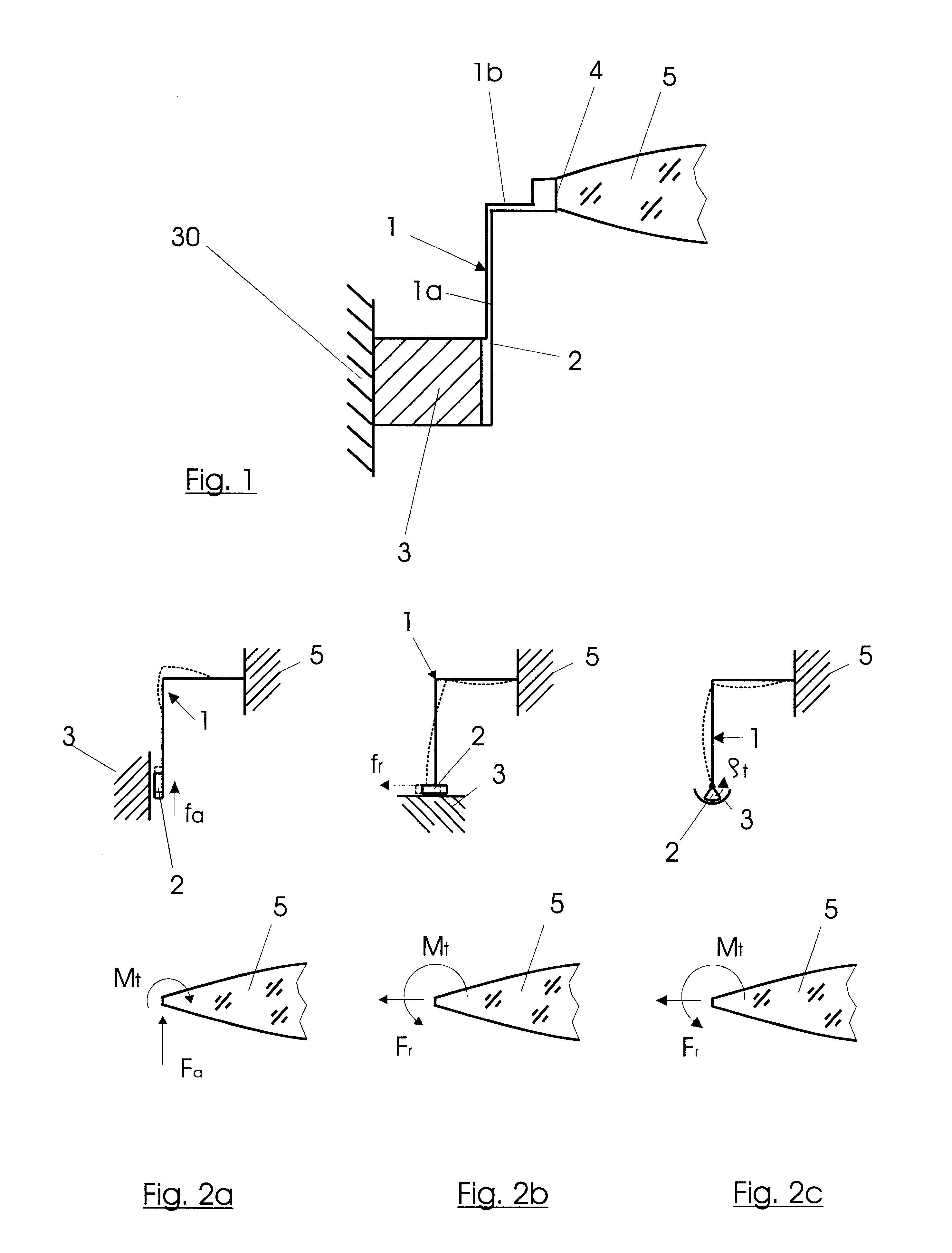Mounting device for an optical element
a technology of mounting device and optical element, which is applied in the direction of mounting, microlithography exposure apparatus, instruments, etc., can solve the problems of inability to make the joint too soft and inability to achieve effective compensation
- Summary
- Abstract
- Description
- Claims
- Application Information
AI Technical Summary
Benefits of technology
Problems solved by technology
Method used
Image
Examples
Embodiment Construction
FIG. 1 shows, in a representation of the principle, the spring geometry of a gear element 1 which is designed with an axially situated torsion spring 1a and a radial torsion spring 1b, and thereby forms an angular shape. A plurality of gear elements 1 arranged in a fashion distributed uniformly over the circumference are in each case connected to a support member 3 at one end via base points 2. The support member 3 is connected (in a way not shown in more detail) to an external mounting structure 30 or an assembly which, for example, forms a lens for a semiconductor lithography exposure system. Via the radially situated torsion spring 1b and a top point 4, in each case, a joint to an optical element 5, which is a lens in the case of the exemplary embodiments discussed below, made at the other end of the gear element 1.
The various load instances and main loads resulting therefrom on the optical element 5 may be seen in FIGS. 2a, 2b and 2c. An axial displacement of the base point 2 is...
PUM
| Property | Measurement | Unit |
|---|---|---|
| angle | aaaaa | aaaaa |
| angle | aaaaa | aaaaa |
| angle α1 | aaaaa | aaaaa |
Abstract
Description
Claims
Application Information
 Login to View More
Login to View More - R&D
- Intellectual Property
- Life Sciences
- Materials
- Tech Scout
- Unparalleled Data Quality
- Higher Quality Content
- 60% Fewer Hallucinations
Browse by: Latest US Patents, China's latest patents, Technical Efficacy Thesaurus, Application Domain, Technology Topic, Popular Technical Reports.
© 2025 PatSnap. All rights reserved.Legal|Privacy policy|Modern Slavery Act Transparency Statement|Sitemap|About US| Contact US: help@patsnap.com



